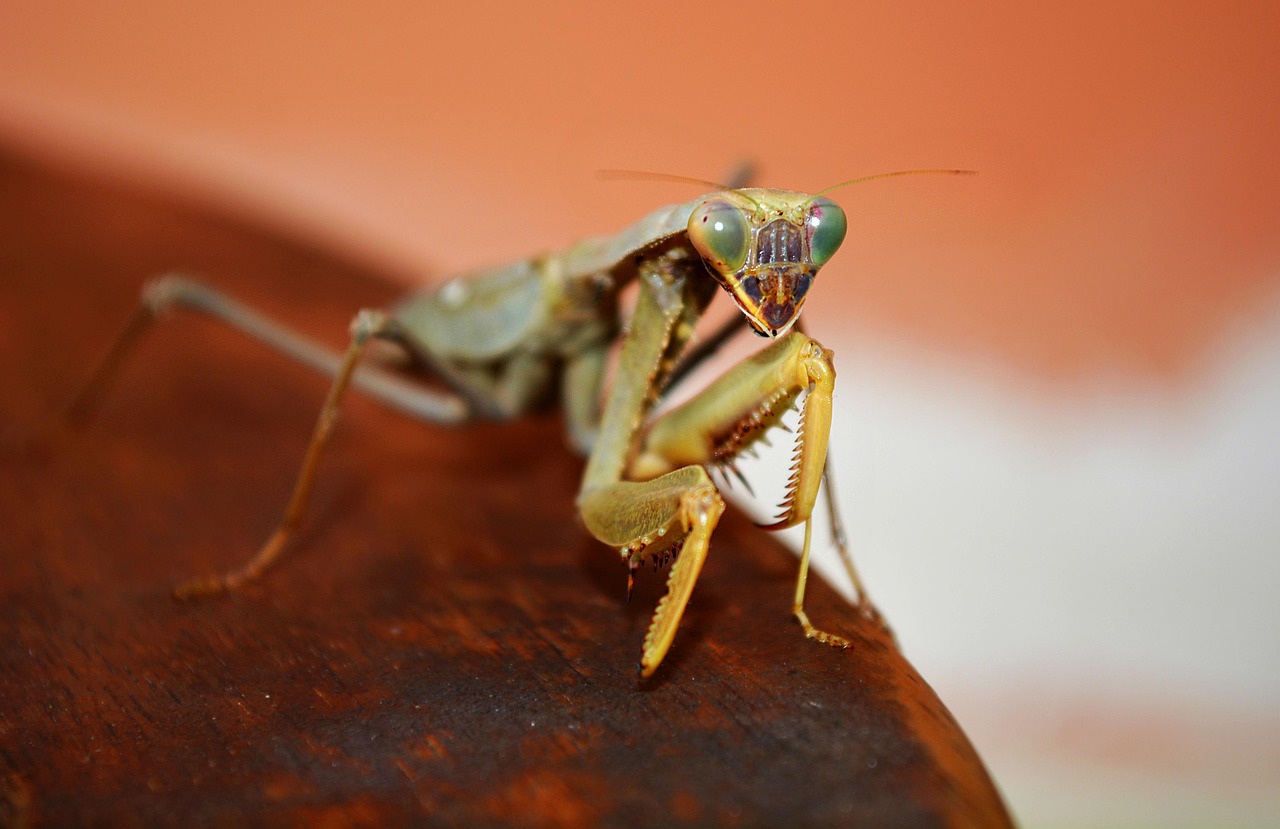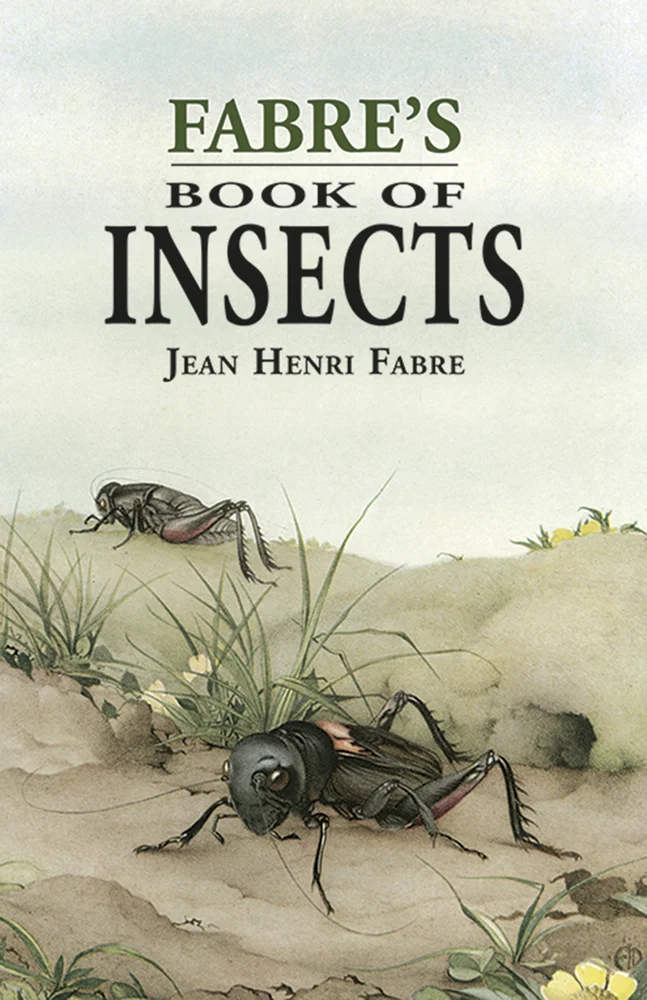As Elwin Ransom prepares to exit his spaceship on Mars in C.S. Lewis’s Out of the Silent Planet, he has a horrible moment where he wonders what unfamiliar forms of life await him:
He saw in imagination various incompatible monstrosities—bulbous eyes, grinning jaws, horns, stings, mandibles. Loathing of insects, loathing of snakes, loathing of things that squashed and squelched, all played their horrible symphonies over his nerves. But the reality would be worse: it would be an extra-terrestrial Otherness—something one had never thought of, never could have thought of.
But who on earth could have thought of the all-too-real insects that so terrify Ransom? As it happens, the aliens he meets on Mars are foreign but not terrifying. They don’t look like men, but they do, in certain ways, think like them, and Ransom takes comfort in this similarity. But the insect world that surrounds us is far more alien, and totally inescapable. They outnumber us two hundred million to one, according to one estimate.
For example, have you ever heard of German roaches? I hadn’t, either, until they infested my townhouse’s kitchen, having crawled through the walls from the unoccupied apartment next door. Once they made their way in, they took over entire drawers and, more horrifyingly, climbed into my appliances. I’d open the coffee maker, and they’d swarm out. “Yeah,” said the exterminator I called. “They like warm places and vibrations.” I paid him $100 a month, but he couldn’t get rid of them. They multiply too quickly.
They lived in my kitchen for eighteen months. I had a panic attack any time I opened a drawer. I could spray as much poison as I wanted, but they kept coming back. Finally, I’d had enough and ordered hundreds of dollars of poison from the internet: industrial-strength stuff, in crystal form, which I mixed with water at twice the recommended levels. I bought gel baits, diatomaceous earth, a new vacuum cleaner with a HEPA filter to suck the little bastards out of every crevice in the house, and even a roach birth-control spray. I applied my new purchases to every surface in the kitchen every Monday afternoon, and after six weeks or so, I stopped seeing their horrible amber exoskeletons everywhere—except in my nightmares.
I can’t help admiring the people who, when faced with the squashing, squelching insect world that surrounds us, choose not to look away but to look closer. And maybe no one has ever looked closer than Jean-Henri Fabre, a nineteenth-century Provençal entomologist whose best-known work, Souvenirs entomologiques (translated into English as the rather less mellifluous Fabre’s Book of Insects) invites us to look closer, too.
Fabre, the son of peasants, was almost entirely self-taught, picking up birds’ nests and mushrooms and examining them closely. He claims, in the opening chapter of his book, to have learned only two scientific lessons during his entire life: the naturalist Alfred Moquin-Tandon showed him how to look at a snail’s interior, and a chemistry teacher once accidentally exploded a glass, hurting most of his students. “On that occasion,” Fabre muses, “I learnt one thing at least. Ever after, when I made experiments of that kind, I kept my pupils at a distance.” Fabre was the trust sort of empiricist: what he knew—and he knew a lot—he learned from personal observation.
Souvenirs entomologiques is a funny kind of science book, in that it uses very little scientific language. Instead, Fabre tells the stories of the insects he knows and loves so well using everyday, homely language that any child could understand. Here, for example, is his description of the mason wasp:
A boiler or furnace she regards as the ideal home, but she is quite willing to content herself in any snug corner: a conservatory, a kitchen-ceiling, the recess of a closed window, the wall of a cottage bedroom. As to the foundation on which she fixes her nest, she is entirely indifferent. As a rule she builds her groups of cells on stonework or timber; but at various times I have seen nests inside a gourd, in a fur cap, in the hollow of a brick, on the side of a bag of oats, and in a piece of lead tubing.
It’s difficult to explain the appeal of a paragraph like this one, though it’s hard to imagine it not appealing to anyone. Fabre slightly anthropomorphizes the wasp by ascribing preferences to her (and, for that matter, by calling her her instead of it), but what he says about those preferences is based entirely on close observation, no doubt over the course of many years. His language is simple but, at least in the English translation, sprightly—there is a peasant quality to it that I think Fabre must have cherished, given his own background and his frequent loving reprimands of the peasants among whom he lived in the village of Sérignan-du-Comtat. Reading him, we get the feeling that he is with us, gently pointing to the tiny world we walk past every day. He never condescends to his reader, but nor does he speak over his head.
I have said that he anthropomorphizes the insects he writes about. This is true, but probably his greatest strength as a scientist is his ability to make insects familiar without making them any less foreign. He presents the Spanish Copris as a self-sacrificing mother who goes for months without eating so that her grubs can survive, but then he says flatly, “I know of no other such case of maternal self-denial” in the insect world. Indeed, he’s already told us that the praying mantis “has no heart. She eats her husband, and deserts her children.” His language might be homely, but it’s not romanticized. Insects devour one another with no compunction and in stomach-turning ways. Did you know that fireflies are carnivorous? They anesthetize snails and then liquify them in their shells, to consume them as a kind of nauseous milkshake. On the sentence level, Fabre sounds like he’s writing The Wind in the Willows, but as the full story unfolds, the nastiness and inhumanity of the insect world becomes more than clear.
He generally avoids drawing moral lessons from the insects, such that when he does, it’s particularly charming. Noting the difference between the relatively placid conehead mantis, which does not eat its own kind, and the vicious and cannibalistic praying mantis, he says that their “profound moral differences [ . . . ] are not due to any difference in the bodily form. Possibly they may arise from the difference in food. Simple living, as a matter of fact, softens character.” I have no reason to think he is not in earnest with this explanation, but there’s still a kind of peasant’s joke in it, a half-wink that endears Fabre to me even more.
Or there’s his complaint about ants, which he consistently presents as nasty little thieves and murderers: “And to think that we place the Ant in the front rank of insects! Books are written in her honour, and the stream of praise never runs dry. The naturalists hold her in great esteem; and add daily to her fame. It would seem that with animals, as with men, the surest way to attract attention is to do harm with others.” Again, his distaste for ants is no doubt sincere, and yet there is an irony in his expression of it that both distances him from this judgment and draws the reader into the joke.
Fabre is particularly interested in the way that insects are driven by instinct rather than reason. But at times, their instinct resembles reason. He is amazed at the intricate way that wasps build their underground nests, but he easily traps them in those nests by placing a bell jar over the entrance. These wasps are perfectly capable of digging—why don’t they just dig underneath the bell jar and emerge free on the other side? This is the mystery of insect behavior: “On the one hand their instincts teach them to behave like men of science; but on the other it is plain that they are entirely without the power of reflection.” Perhaps this is Fabre’s true mission in Souvenirs entomologiques: he’s reflecting on the insects’ behalf.
In doing so, he somehow manages to bring a certain dignity to both human life and to insect life—not the same sort of dignity, mind you, and definitely not to the same degree. The capricorn beetle grub, for example, has no senses other than taste and touch, and no knowledge other than “as much as a bit of intestine can know.” It is far down the great chain of being from human beings, and yet it has some of the same elements as the higher organisms, all of whom, human beings included, “have powers quite apart from the senses: inspirations that are born with them, and are not the result of learning.” In other words, the line between instinct and the sort of innate knowledge proposed by Plato and Descartes is not a thick one. It would be reductionist to claim that our minds work like the grub’s (if the grub can even be said to have a mind), but in some sense the building blocks of the grub’s mind are used for ours, as well. Our dignity comes from the differences between us and the grub; the grub’s comes from the similarities.
Fabre reports that, to understand insects, he (and his children) have done a number of experiments, almost all of which could be replicated without much special equipment at all. At times these experiments demonstrate his courage. For example, he wants to figure out how the parasitic larvae of a particular beetle make their way into the underground cells of the mason bee, and he realizes, to his horror, that he is going to have “to stand for whole hours, perhaps all day, watching the works I intended to upset; lens in hand, I must examine, unmoved amid the whirl, the things that were happening in the cells. Moreover, the use of a mask, of gloves, of a covering of any kind, was out of the question, for my fingers must be absolutely free.” The question of the larvae is so important to him that he resolves to stand firm even if he is stung many times. (The larvae, horrifyingly, hitch a ride on the bees themselves.) Here we have an act of courage akin to Galileo standing before the Inquisition, except that Fabre refuses to stand down even under the threat of torture.
Why insects, though? The universe is incomparably large. Why didn’t Fabre gaze out into the heavens, like Copernicus and Galileo, instead of down at these grotesque little monsters? He admits he is tempted to abandon the small for the massive, and yet “Infinitesimal life telling its joys makes me forget the pageant of the stars. Those celestial eyes look down upon me, placid and cold, but do not stir a fibre within me. Why? They lack the great secret—life.” In other words, many of us experience the insect world as inhuman, as indeed it is. I don’t want to look into the five eyes of the wasp, and I know that even if I did, the two of us would never be able to come to an agreement. And yet she and I have something in common that we don’t have with the sun and the other stars: we are alive, and we will not always be. Perhaps that’s enough.
Near the end of Perelandra, the sequel to Out of the Silent Planet, Ransom—this time on Venus rather than Mars—encounters a man-sized insect, following close behind a dead Oxford don whose body has been possessed by the devil. (Writing that sentence makes me realize that Perelandra is weird as all hell.) Here’s the description:
First came what looked like branches of trees, and then seven or eight spots of light, irregularly grouped like a constellation. Then a tubular mass which reflected the red glow as if it were polished. His heart gave a great leap as the branches suddenly resolved themselves into long wiry feelers and the dotted lights became the many eyes of a shell-helmeted head and the mass that followed it was revealed as a large roughly cylindrical body. Horrible things followed—angular, many jointed legs, and presently, when he thought the whole body was in sight, a second body came following it and after that a third. The thing was in three parts, united only by a kind of wasp’s waist structure—three parts that did not seem to be truly aligned and made it look as if it had been trodden on—a huge, many legged quivering deformity.
Ransom is, of course, frightened, but he eventually realizes that much of his fear comes from the demon that is possessing the Oxford don. When he looks back at the insect-alien, “all loathing had vanished clean out of his mind, so that neither then nor at any other time could he remember it, nor even understand again why one should quarrel with an animal for having more legs or eyes than oneself.” I’m not there yet—but Fabre has moved me in the right direction.
Image via pixabay.






